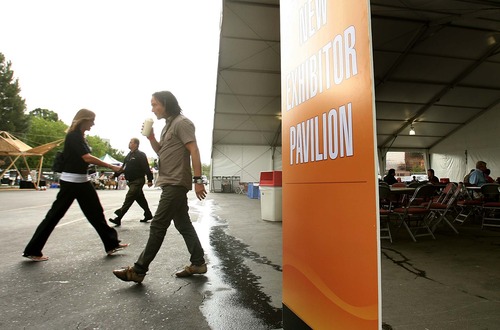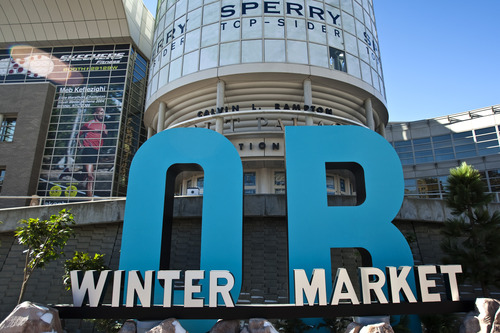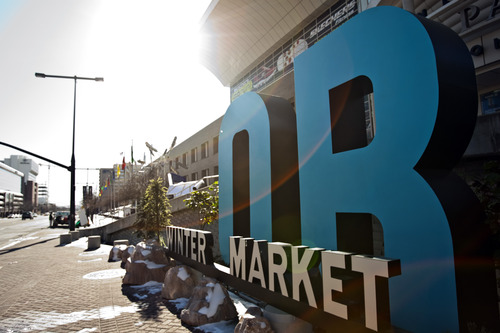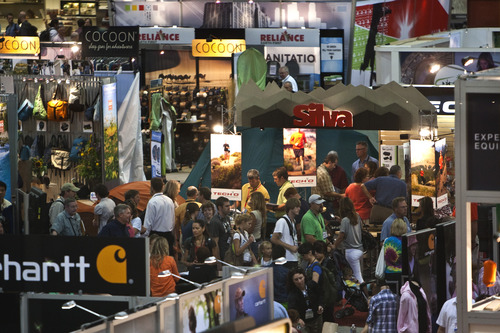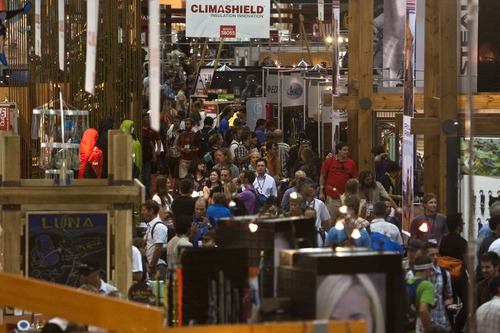This is an archived article that was published on sltrib.com in 2013, and information in the article may be outdated. It is provided only for personal research purposes and may not be reprinted.
Salt Lake City offers trade shows and conventions some distinct advantages.
These include a state-of-the-art 679,000 convention center in the heart of downtown, an airport that is a hub for a major airline, a nonunion labor force that makes staging a conference less expensive, large numbers of volunteers, great mass transit and a setting that includes nearby natural wonders.
But that doesn't make landing or keeping a big show such as Outdoor Retailer or a major convention such as the American Library Association easy. The competition among cities can be fierce. Bidding is a fine art.
"You are kind of like the kid at the high-school dance," said Mark White, vice president for sales for Visit Salt Lake. "The person you want to dance with doesn't want to dance with you. You have to be creative to get the dance."
Utah's quirky liquor laws and lack of a conference hotel can prove challenging. Scott Beck, president and CEO of Visit Salt Lake, is candid about both.
"The No. 1 reason we lose business is the perception that we lack dining and nightlife," he said, adding that "our liquor laws really hurt us. People have experiences that point out the peculiarity of our alcohol service."
For example, a Utah law that requires someone going into a restaurant to order a meal before purchasing an alcoholic beverage is difficult to explain or understand.
"Reality is a problem, but perception is even worse," said White.
Beck said, for example, that a P.F. Chang's restaurant in Denver, a major Salt Lake competitor, offers patrons a bar where they can socialize and do business over an after-conference drink. Salt Lake's P.F. Chang's does not have a bar, due to regulations. That leaves it up to a hostess to explain why, and the reality is there is no positive way to explain it.
A second major disadvantage for Salt Lake City is that it lacks a convention hotel. Those who come to a conference or trade show like to gather in one or two central locations. Salt Lake's hotels tend to be smaller and farther away from its convention center.
The Salt Palace is large considering the number of available rooms and the size of the city.
Add to that the fact that Sandy's 254,000-square-foot South Towne Exposition Center hosts consumer events such as boat, RV, gun, travel, outdoor and auto shows that most other cities host in their conference centers.
"Convention center utilization between 70 and 75 percent is optimum," said Beck. "The national average is between 65 and 67 percent. We are at 45."
White and his sales staff aggressively pursue major conventions, sometimes years in advance. Booking a major group often takes several tries. Salt Lake is trying to land the library meeting for the seventh time. Some conventions are already booked for 2022.
There are three major methods Visit Salt Lake uses to find groups to come to Utah.
First, most national associations like to rotate the part of the country they are in to accommodate members who live in different regions. So bidders look to see when a convention's "rotation" is in the West.
Second, though competitive, convention centers are also collaborative. Every conference — including programs, hotel rooms used and meeting space needed — is put into a central data base all can see.
Third, and perhaps most important, is having a local contact, what Visit Salt Lake calls an ambassador, who is a member of a professional group or trade organization who wants to see the convention hosted in his or her home city.
Then a bid is prepared. A formal presentation that once used a large three-ring binder can now be put on a memory flash stick and customized. Video from a local ambassador, the governor or a mayor can be embedded into the presentation. New digital media allow bidders the ability to make a specific presentation for a specific group.
The result of a successful bid can produce some eye-popping numbers. For example, Visit Salt Lake said that hosting the winter and summer Outdoor Retailer shows alone generates about $40 million annually for the local economy.
There is a fine art to bidding for a conference, and it's obvious that Visit Salt Lake uses every affordable advantage it has to keep big events such as Outdoor Retailer or land new events to fill the Salt Palace, restaurants and hotel rooms.
Twitter: @tribtomwharton


